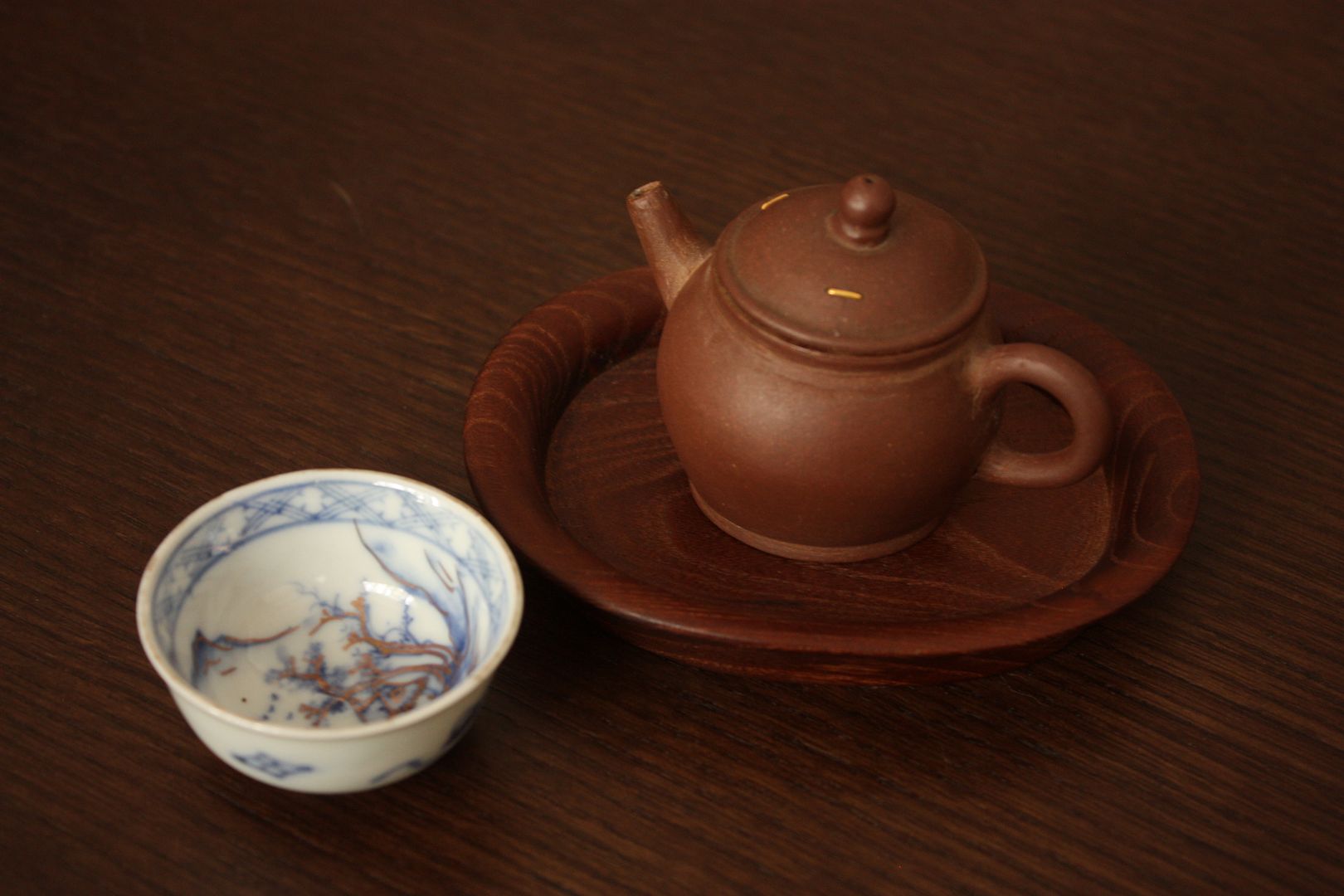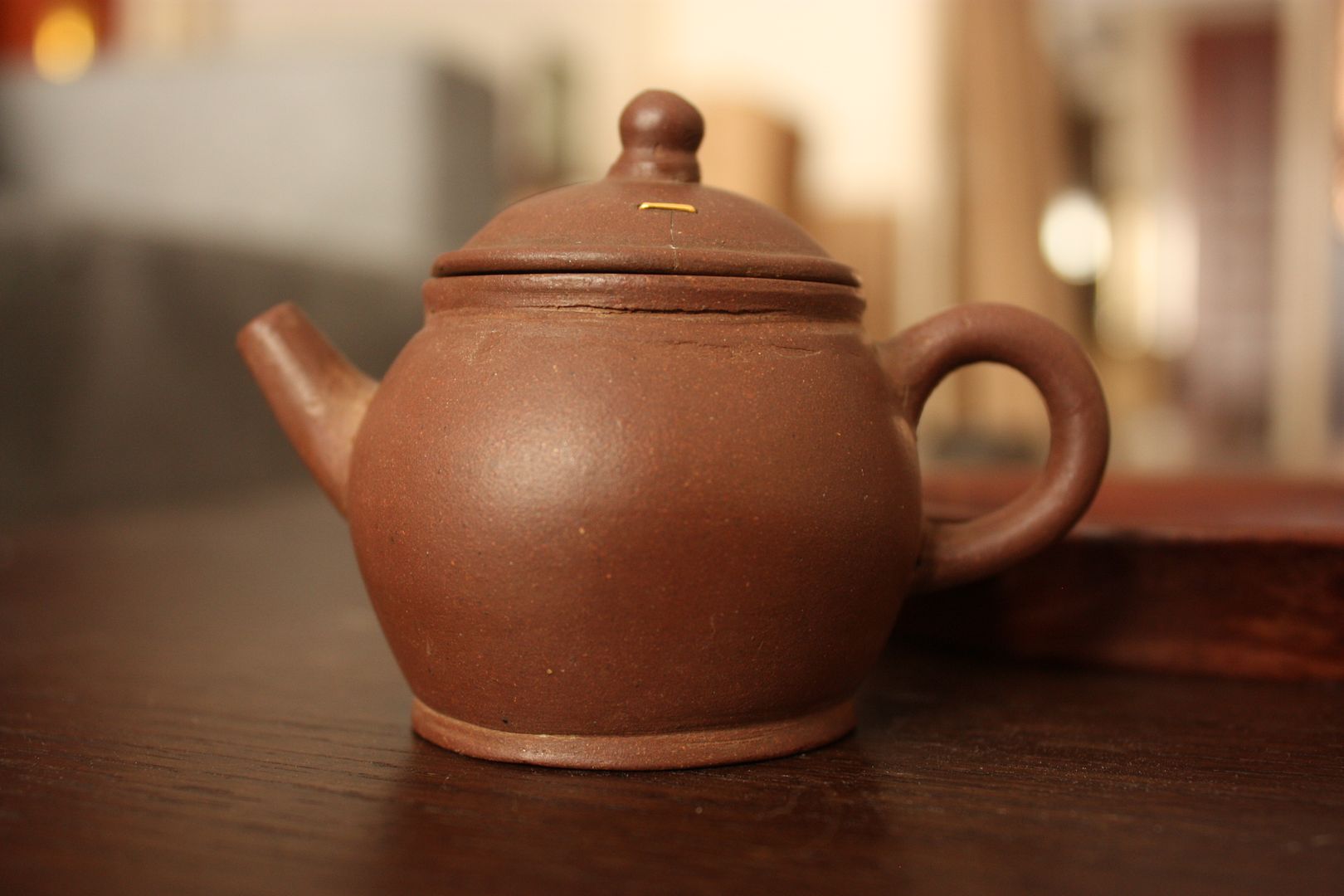I’ve been reading books on tea again in a new project that I’m working on that will, one day, end up as a book on the history of tea practices in East Asia. One of the things that I’ve come across recently is Lin Yutang‘s writing on tea in his book The Importance of Living. He’s one of my favourite writers, known for his witty prose and incisive comments. I thought it’s worth transcribing them here, since this book is not easily found in libraries these days, I think, and seems to be still under copyright (although there’s a free copy floating around on some website). Do keep in mind that this was originally written in English. Since it’s a bit long, I’ll split them into three posts. I’ve preserved all his romanization of Chinese names and other idiosyncrasies.

Tang Yin å”寅 (1470-1524), Shimingtu 事茗圖, ink on paper (The Palace Museum, Beijing, China).
IV. On Tea and Friendship
I do not think that, considered from the point of view of human culture and happiness, there have been more significant inventions in the history of mankind, more vitally important and more directly contributing to our enjoyment of leisure, friendship, sociability and conversation, than the inventions of smoking, drinking and tea. All three have several characteristics in common: first of all, that they contribute toward our sociability; secondly, that they do not fill our stomach as food does, and therefore can be enjoyed between meals; and thirdly, that they are all to be enjoyed through the nostrils by acting on our sense of smell. So great are their influences upon culture that we have smoking cars besides dining cars, and we have wine restaurants or taverns and tea houses. In China and England at least, drinking tea has become a social institution.
The proper enjoyment of tobacco, drink and tea can only be developed in an atmosphere of leisure, friendship and sociability. For it is only with men gifted with the sense of comradeship, extremely select in the matter of forming friends and endowed with a natural love of the leisurely life, that the full enjoyment of tobacco and drink and tea becomes possible. Take away the element of sociability, and these things have no meaning. The enjoyment of these things, like the enjoyment of the moon, the snow and the flowers, must take place in proper company, for this I regard as the thing that the Chinese artists of life most frequently insist upon: that certain kinds of flowers must be enjoyed with certain types of persons, certain kinds of scenery must be associated with certain kinds of ladies, that the sound of raindrops must be enjoyed, if it is to be enjoyed fully, when lying on a bamboo bed in a temple deep in the mountains on a summer day; that, in short, the mood is the thing, that there is a proper mood for everything, and that wrong company may spoil the mood entirely. Hence the beginning of any artist of life is that he or anyone who wishes to learn to enjoy life must, as the absolutely necessary condition, find friends of the same type of temperament, and take as much trouble to gain and keep their friendship as wives take to keep their husbands, or as a good chess player takes a journey of a thousand miles to meet a fellow chess player.
The atmosphere, therefore, is the thing. One must begin with the proper conception of the scholar’s studio and the general environment in which life is going to be enjoyed. First of all, there are the friends with whom we are going to share this enjoyment. Different types of friends must be selected for different types of enjoyment. It would be as great a mistake to go horseback riding with a studious and pensive friend, as it would be to go to a concert with a person who doesn’t understand music. Hence as a Chinese writer expresses it:
For enjoying flowers, one must secure big-hearted friends. For going to sing-song houses to have a look at sing-song girls, one must secure temperate friends. For going up a high mountain, one must secure romantic friends. For boating, one must secure friends with an expansive nature. For facing the moon, one must secure friends with a cool philosophy. For anticipating snow, one must secure beautiful friends. For a wine party, one must secure friends with flavor and charm.
Having selected and formed friends for the proper enjoyment of different occasions, one then looks for the proper surroundings. It is not so important that one’s house be richly decorated as that it should be situated in beautiful country, with the possibility of walking about on the rice fields, or lying down under shady trees on a river bank. The requirements for the house itself are simple enough. One can “have a house with several rooms, grain fields of several mow, a pool made from a basin and windows made from broken jars, with the walls coming up to the shoulders and a room the size of a rice bushel, and in the leisure time after enjoying the warmth of cotton beddings and a meal of vegetable soup, one can become so great that his spirit expands and fills the entire universe. For such a quiet studio, one should have wut’ung trees in front and some green bamboos behind. One the south of the house, the eaves will stretch boldly forward, while on the north side, there will be small windows, which can be closed in spring and winter to shelter one from rain and wind, and opened in summer and autumn for ventilation. The beauty of the wut’ung tree is that all its leaves fall off in spring and winter, thus admitting us to the full enjoyment of the sun’s warmth, while in summer and autumn its shade protects us from the scorching heat.” Or as another writer expressed it, one should “build a house of several beams, grow a hedge of chin trees and cover a pavilion with hay-thatch. Three mow of land will be devoted to planting bamboos and flowers and fruit trees, while two mow will be devoted to planting vegetables. The four walls of a room are bare and the room is empty, with the exception of two or three rough beds placed in the pavilion. A peasant boy will be kept to water the vegetables and clear the weeds. So then one may arm one’s self with books and a sword against solitude, and provide a ch’in (a stringed instrument) and chess to anticipate the coming of good friends.”*
An atmosphere of familiarity will then invest the place. “In my studio, all formalities will be abolished, and only the most intimate friends will be admitted. They will be treated with rich or poor fare such as I eat, and we will chat and laugh and forget our own existence. We will not discuss the right and wrong of other people and will be totally indifferent to worldly glory and wealth. In our leisure we will discuss the ancients and the moderns, and in our quiet, we will play with the mountains and rivers. then we will have thin, clear tea and good wine to fit into the atmosphere of delightful seclusion. That is my conception of the pleasure of friendship.”
*By chess he likely means weiqi.
Lin Yutang, The Importance of Living, 1937, New York: The John Day Company, pp. 221-31. (to be continued)




Yeah whisky prices have been leaking too, as well as luxury watches. I wrote a post maybe a decade ago…